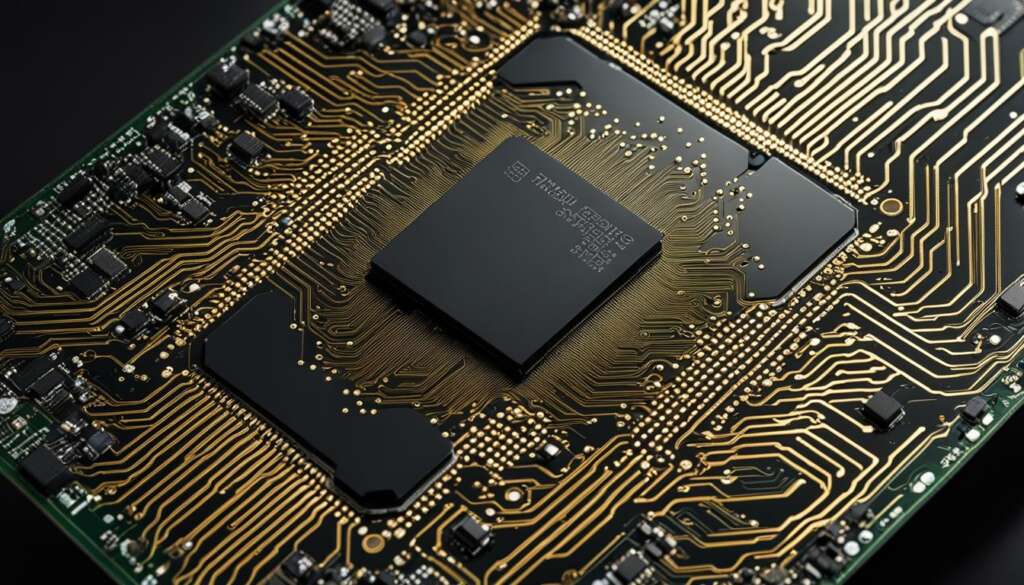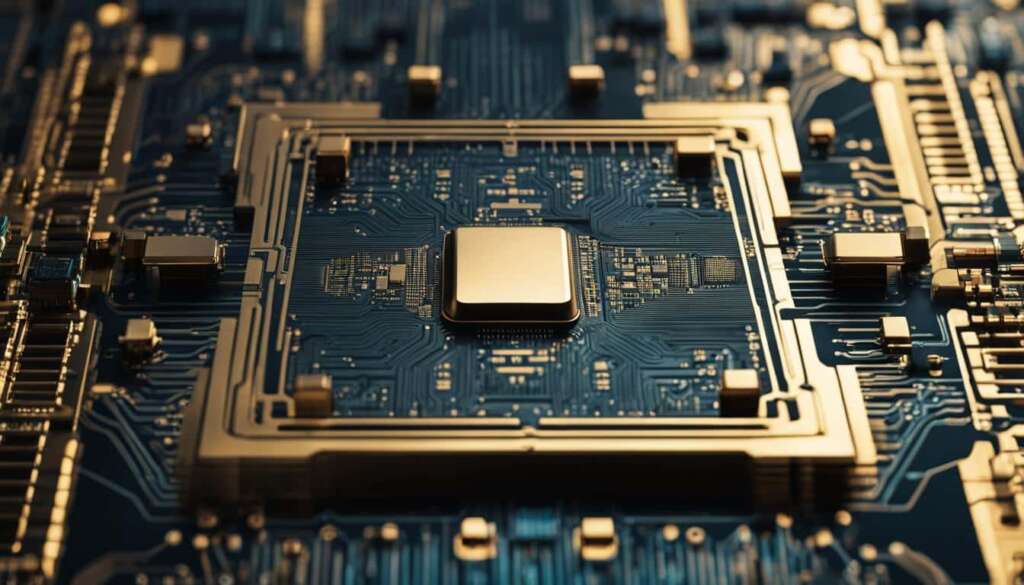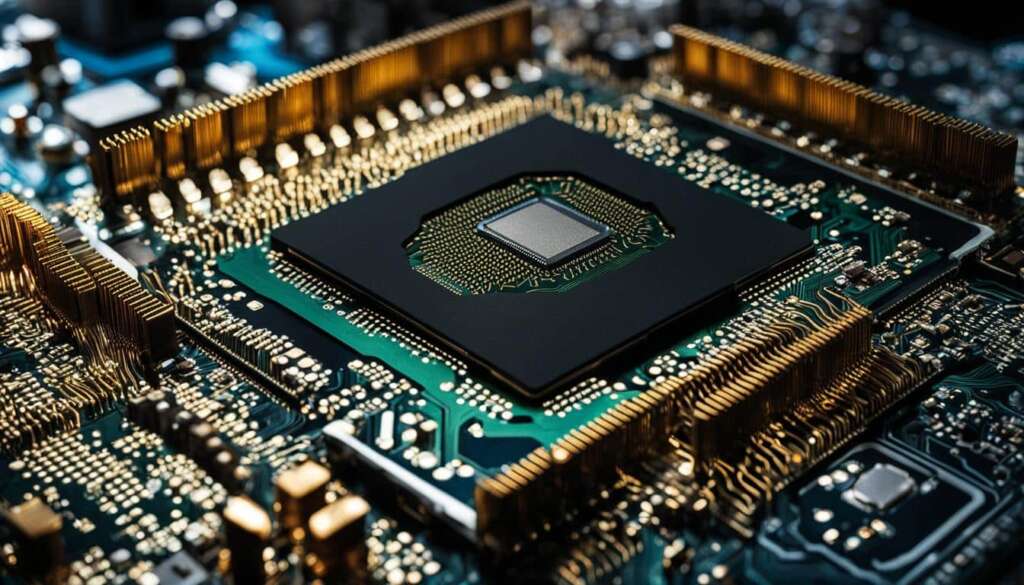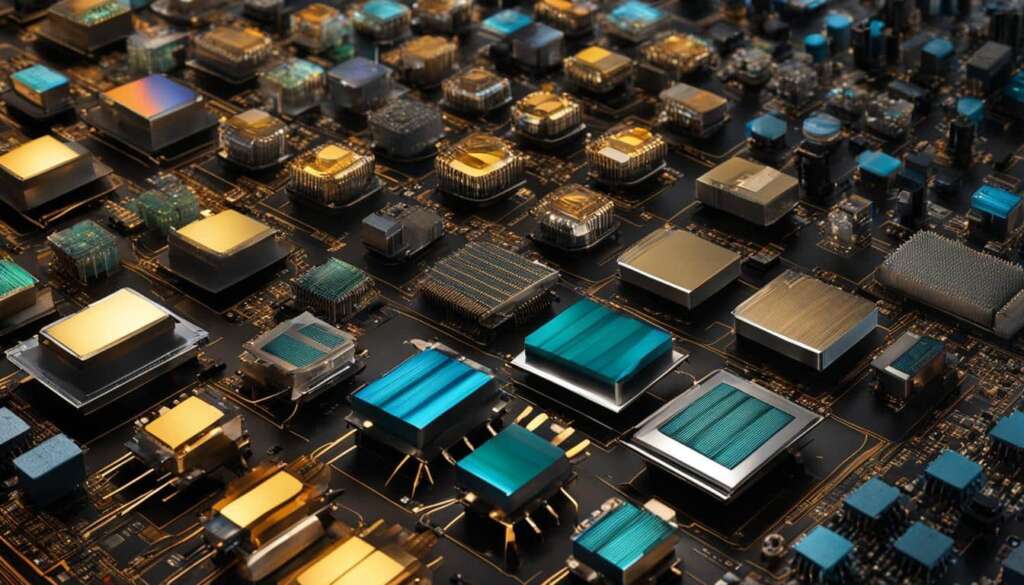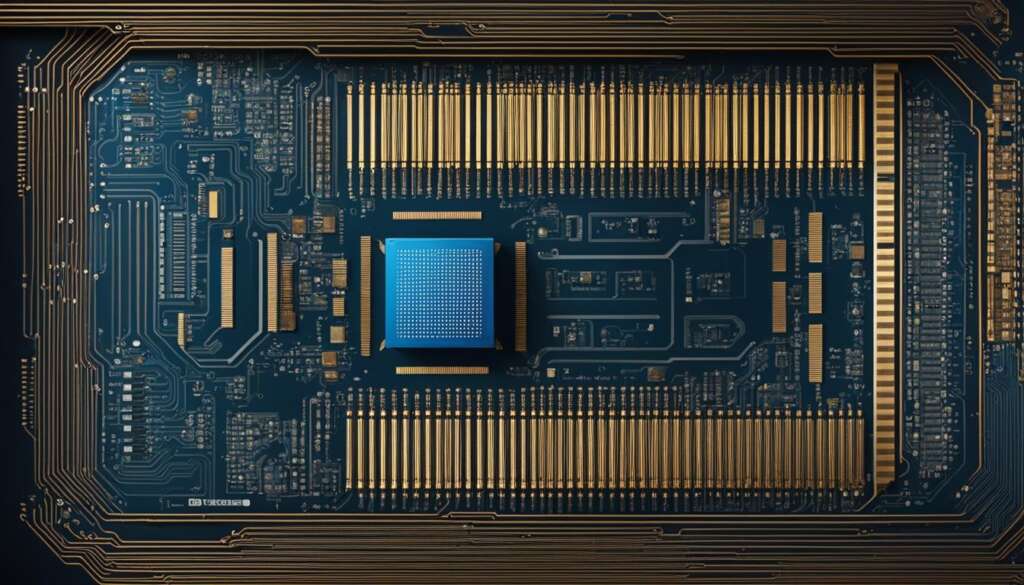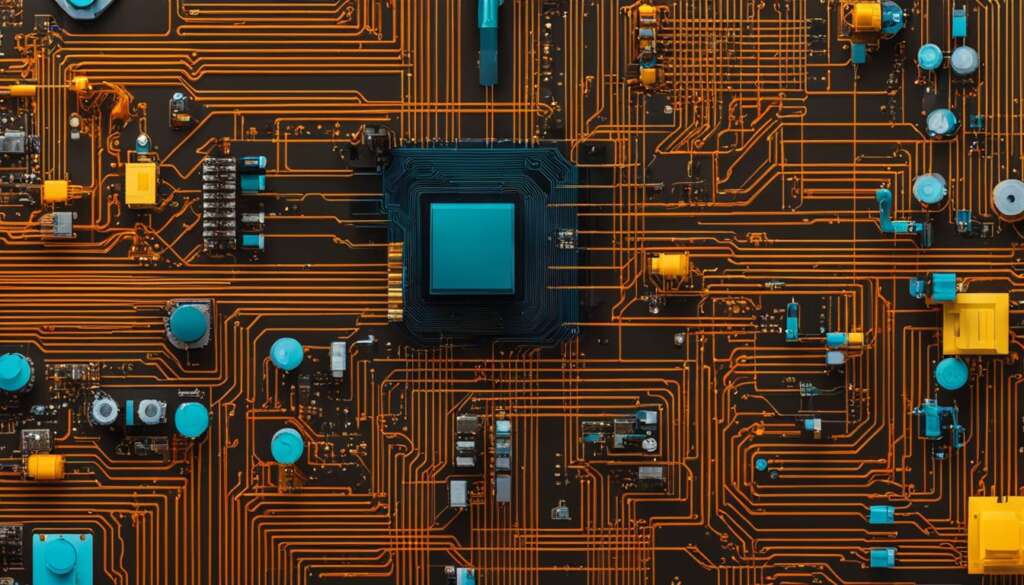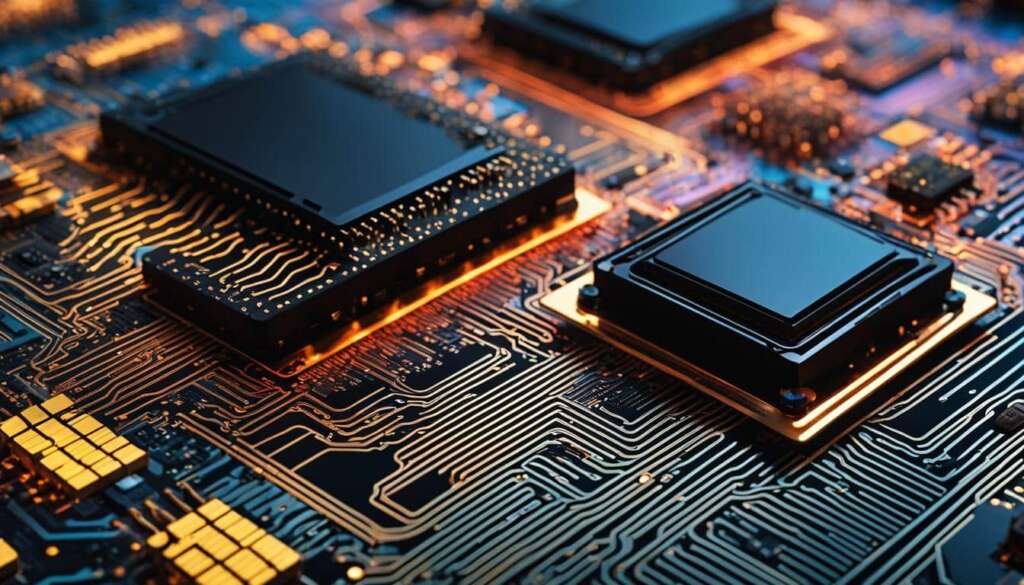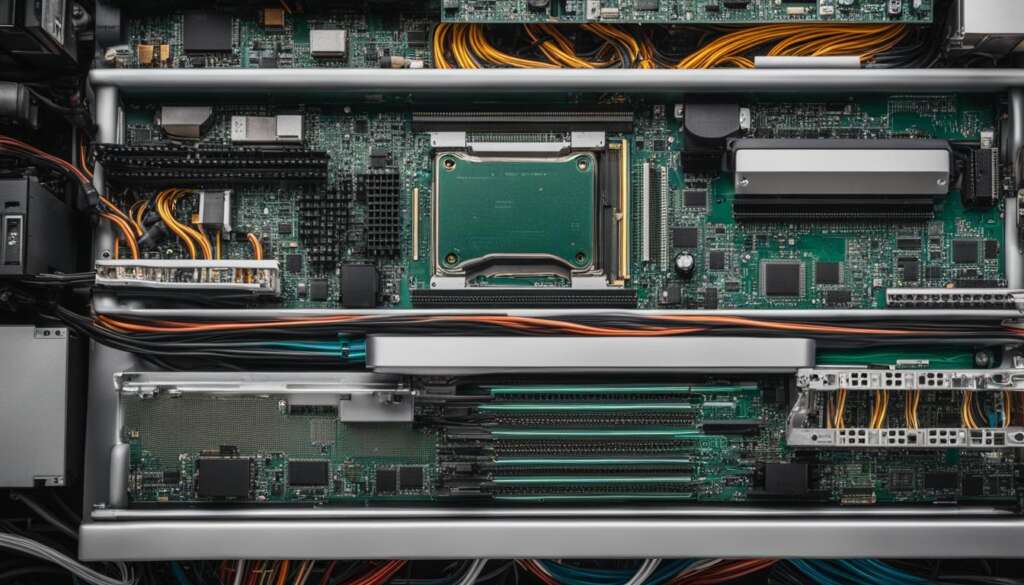Table of Contents
Processor Security Features have played a crucial role in ensuring the safety and protection of our digital landscape. From the introduction of the Western Electric 229G cryptoprocessor, which provided tamper resistance and eliminated the need for physical security measures, to the modern-day secure microarchitecture and secure processing units, processor security features have continuously evolved to keep up with the ever-growing threat landscape.
The Purpose of Secure Cryptoprocessors
A secure cryptoprocessor is a dedicated computer-on-a-chip or microprocessor that is embedded with physical security measures to ensure tamper resistance. Unlike cryptographic processors that output decrypted data onto a bus in a secure environment, secure cryptoprocessors do not output decrypted data or decrypted program instructions in an environment where security cannot always be maintained. The purpose of secure cryptoprocessors is to act as the keystone of a security subsystem, eliminating the need for physical security measures to protect the rest of the subsystem.
By embedding physical security measures directly onto the chip, secure cryptoprocessors provide an added layer of protection against tampering and unauthorized access. These measures can include tamper-evident containment mechanisms that detect and respond to physical tampering attempts, ensuring that any breach attempts are immediately detected and the appropriate actions are initiated. Additionally, secure cryptoprocessors may incorporate conductive shield layers that prevent unauthorized reading of internal signals, further enhancing the overall security of the system.
“Secure cryptoprocessors eliminate the need for physical security measures to protect the rest of the subsystem.”
By eliminating the need for physical security measures, secure cryptoprocessors offer a more efficient and cost-effective solution for protecting sensitive data. They provide a secure environment for processing and storing data, reducing the risk of data breaches and unauthorized access. In addition to their role in ensuring the integrity of a security subsystem, secure cryptoprocessors are also commonly used in various applications that require high levels of data protection, such as financial transactions, secure communication systems, and secure authentication processes.
| Physical Security Measures | Advantages |
|---|---|
| Tamper-evident containment mechanisms | Immediate detection of tampering attempts |
| Conductive shield layers | Prevention of unauthorized reading of internal signals |
| Embedded security features | Reduced risk of data breaches and unauthorized access |
Table: Physical Security Measures and Advantages of Secure Cryptoprocessors
Examples of Secure Cryptoprocessors
One example of a secure cryptoprocessor is the hardware security module (HSM). HSMs are specialized devices that contain one or more secure cryptoprocessor chips. These devices are commonly used with enterprise servers to provide high-grade security measures. HSMs have multiple levels of physical security, with the secure cryptoprocessor being the most secure component.
In HSMs, the secure cryptoprocessor chips are often potted alongside other processors and memory chips to store and process encrypted data. These devices can also be part of a computer or ATM that operates inside a locked safe, preventing theft, substitution, and tampering. HSMs play a critical role in protecting sensitive information and ensuring the integrity of cryptographic operations.
In addition to HSMs, there are other types of secure cryptoprocessor chips available in the market. These chips are designed to provide robust security features and are integrated into various systems and devices. Secure cryptoprocessor chips are essential components in safeguarding data and protecting against malicious attacks.
| Secure Cryptoprocessor | Key Features |
|---|---|
| Hardware Security Module (HSM) | Multiple levels of physical security Secure storage and processing of encrypted data Protection against theft, substitution, and tampering |
| Embedded Secure Cryptoprocessors | Smaller and less complex package Same level of physical protection for keys and secrets as smartcard processors Commonly used for cryptographic authentication |
| Specialized Cryptoprocessor Chips | Integrated into various systems and devices Provide robust security features Safeguard data and protect against attacks |
Secure Cryptoprocessors for Embedded Systems
While smartcards are widely deployed as secure cryptoprocessors, there are also secure cryptoprocessors available for embedded systems. These processors provide the same level of physical protection for keys and secret material as smartcard processors or TPMs, but in a smaller and less complex package. They are often referred to as cryptographic authentication devices and are commonly used to authenticate peripherals, accessories, and consumables. These turnkey integrated circuits are designed to be embedded in a system, typically soldered to a PC board.
Secure cryptoprocessors for embedded systems offer numerous advantages. They are highly secure, ensuring the protection of sensitive information. Their small size and easy integration make them suitable for a wide range of applications. These processors are commonly used in industries such as banking, healthcare, and IoT, where secure authentication and data protection are crucial. The use of cryptographic authentication devices in these industries helps prevent unauthorized access and data breaches.
Embedded systems play a vital role in our daily lives, from access control systems and point-of-sale terminals to industrial automation and smart home devices. The integration of secure cryptoprocessors in these systems ensures the confidentiality, integrity, and availability of data, protecting against unauthorized access and tampering. These processors offer a robust security solution for embedded systems, providing peace of mind for both users and system administrators.
Furthermore, secure cryptoprocessors for embedded systems often come with additional features to enhance security. These may include secure boot, secure key storage, and firmware protection mechanisms. Secure boot ensures that only trusted software is loaded during the boot process, preventing malware or unauthorized code execution. Secure key storage protects cryptographic keys from interception or extraction, safeguarding the confidentiality and integrity of sensitive data. Firmware protection mechanisms prevent unauthorized modifications to the system’s firmware, ensuring the system’s integrity and protecting against attacks.
| Benefits of Secure Cryptoprocessors for Embedded Systems | Applications |
|---|---|
| Enhanced security for embedded systems | Access control systems |
| Protection of sensitive information | Point-of-sale terminals |
| Prevention of unauthorized access | Industrial automation |
| Robust security features | Smart home devices |
Tamper-Detecting and Tamper-Evident Containment: Ensuring Secure Processing
Secure cryptoprocessors employ a range of advanced security measures to protect sensitive data and ensure the integrity of the system. One such measure is tamper-detecting and tamper-evident containment mechanisms. These mechanisms are designed to detect any physical tampering attempts and provide evidence of such tampering, ensuring the overall security of the processor.
The tamper-detecting mechanism in secure cryptoprocessors is designed to identify any unauthorized access or modification to the system. It utilizes various techniques such as sensors, seals, or switches that can detect physical tampering, such as opening the processor’s casing or manipulating its components. Once tampering is detected, the tamper-evident containment mechanism triggers, leaving clear evidence of the tampering attempt.
“Tamper-detecting and tamper-evident containment mechanisms are essential components of secure cryptoprocessors. These measures not only help detect unauthorized access or tampering attempts but also provide undeniable evidence to support forensic investigations and ensure the overall security of the system.” – Security Expert
Conductive shield layers are another crucial security measure employed in secure cryptoprocessors. These layers are integrated into the chip to prevent the reading of internal signals, protecting sensitive data from being intercepted or manipulated. The conductive shield layers create an additional barrier against unauthorized access, further enhancing the security of the processor.
Controlled execution is yet another key security measure implemented in secure cryptoprocessors. It prevents timing delays from revealing secret information by carefully managing the execution of instructions. The controlled execution mechanism ensures that sensitive data is processed in a secure and controlled manner, mitigating the risk of information leaks or unauthorized access.
Automatic zeroization is a critical security feature in secure cryptoprocessors. In the event of tampering or a security breach, the processor automatically zeroes out or erases any sensitive data stored within it. This ensures that even if an attacker gains physical access to the processor, the confidential information remains protected, minimizing the potential impact of a security breach.
Table: Security Measures in Secure Cryptoprocessors
| Security Measure | Description |
|---|---|
| Tamper-Detecting Mechanism | Detects unauthorized access or modification attempts to the secure cryptoprocessor. |
| Tamper-Evident Containment Mechanism | Provides evidence of tampering and ensures the overall security of the system. |
| Conductive Shield Layers | Prevents the reading of internal signals, protecting sensitive data from interception or manipulation. |
| Controlled Execution | Manages the execution of instructions to prevent timing delays from revealing secret information. |
| Automatic Zeroization | Erases sensitive data in the event of tampering or security breach, minimizing the impact of a potential breach. |
The Degree of Security in Secure Cryptoprocessors
Secure cryptoprocessors provide a high level of security against various attack methods, making them an essential component in ensuring system security. However, it’s important to understand that while secure cryptoprocessors offer robust protection, they are not invulnerable to vulnerabilities and potential exploits by determined adversaries.
One vulnerability of secure cryptoprocessors is their susceptibility to side-channel attacks. These attacks leverage information leaked through power consumption, electromagnetic radiation, or timing variations to gather sensitive data. Side-channel attacks can be challenging to detect and defend against, posing a potential risk to the security of the cryptoprocessor.
Another potential attack method is the extraction of cryptographic keys or sensitive information through fault injection. By manipulating the operating conditions of the cryptoprocessor, such as temperature extremes or high/low clock frequencies, attackers can induce faults that compromise the security of the system. It’s crucial to implement countermeasures against these fault injection attacks to maintain the integrity of secure cryptoprocessors.
| Attack Method | Vulnerability | Prevention Measures |
|---|---|---|
| Side-channel attacks | Potential information leakage through power consumption, electromagnetic radiation, or timing variations | Implementation of countermeasures such as masking, power analysis resistance, and secure coding practices |
| Fault injection attacks | Manipulation of operating conditions to induce faults and compromise the security | Implementation of fault detection and prevention techniques, secure boot process, and fault-tolerant designs |
It’s important to note that even with these vulnerabilities, practical attacks on secure cryptoprocessors often require full knowledge of the device’s API functions and access, making them less feasible in real-world scenarios.
In conclusion, while secure cryptoprocessors provide a high degree of security, it’s essential to continuously evaluate and update their security measures to mitigate the risks posed by potential vulnerabilities and attack methods. By implementing robust prevention measures and staying informed about emerging threats, system security can be enhanced, ensuring the ongoing protection of sensitive data and information.
Intel SGX: Secure Processing with Enclaves
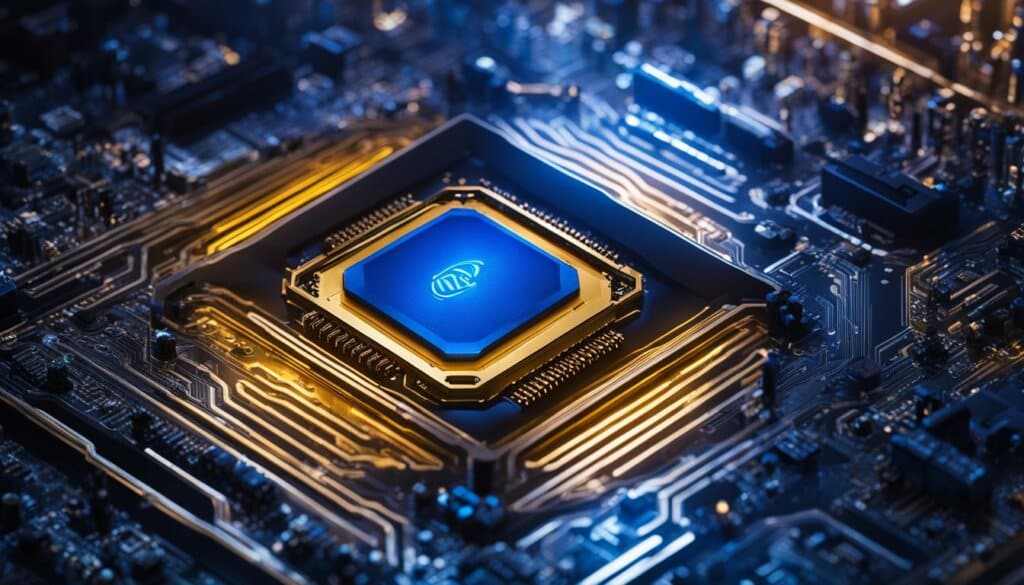
Intel SGX (Software Guard eXtensions) is a groundbreaking technology that revolutionizes secure processing by providing a hardware-based solution for protecting sensitive data. SGX allows developers to create secure enclaves, isolated areas of memory, where code and data can run in complete isolation from the rest of the system. This ensures that even in the event of a security breach, the data within the enclave remains secure and inaccessible to unauthorized parties.
One of the key features of Intel SGX is memory encryption. All data written to or read from the enclave’s memory is automatically encrypted, providing an additional layer of protection against data breaches. This encryption ensures that even if an attacker gains physical access to the system or compromises the operating system, they will not be able to access the sensitive data stored within the enclave.
Intel SGX also supports attestation, a process that allows a trusted entity to verify the authenticity and integrity of the code running inside an enclave. Attestation provides assurance that the code running within the enclave has not been tampered with and can be trusted. This is achieved through cryptographic protocols that generate a certification, including hash values of the enclave’s code and data, which can be used for validation and verification purposes.
Benefits of Intel SGX
- Secure Enclaves: Intel SGX enables the creation of secure enclaves, providing a safe and isolated environment for running sensitive code and processing confidential data.
- Memory Encryption: SGX automatically encrypts all data stored within enclaves, ensuring that even if the system is compromised, the data remains protected.
- Attestation: With attestation, developers can verify the integrity of the code running inside an enclave, providing assurance that it has not been tampered with.
- Minimal Trusted Computing Base (TCB): SGX reduces the trusted computing base to the processor itself, making it easier to secure and trust the execution environment.
Intel SGX provides a powerful solution for secure processing, offering hardware-based protection for sensitive data. Its secure enclaves, memory encryption, attestation, and minimal TCB make it a valuable tool for safeguarding critical information and ensuring the integrity of code execution.
| Feature | Benefits |
|---|---|
| Secure Enclaves | Isolated environment for running sensitive code and processing confidential data |
| Memory Encryption | Automatic encryption of enclave data for enhanced security |
| Attestation | Verification of code integrity, ensuring it has not been tampered with |
| Minimal TCB | Reduces the trusted computing base to the processor, simplifying security |
Provisioning Enclaves with Secrets: Remote Attestation
Provisioning enclaves with secrets is a critical aspect of secure processing. It ensures that sensitive information remains protected within the enclave. In order to establish trust and verify the integrity of the enclave, remote attestation is used. Remote attestation allows a local or remote system to validate the code running inside an enclave by creating a certification that includes hash values of the enclave’s code and data.
Through remote attestation, a secure connection is established between the enclave and the verifier, ensuring that the enclave’s code and data have not been tampered with. This certification can then be used to confirm the authenticity of the enclave and its secrets, providing assurance to the system that the enclave can be trusted. Secrets, such as cryptographic keys or sensitive data, are securely provisioned into the enclave using cryptographic protocols to maintain their confidentiality and integrity.
Enclave memory plays a crucial role in securely storing and processing sensitive information. The enclave’s memory is isolated from the rest of the system, ensuring that data stored within the enclave remains secure and protected from unauthorized access. This isolation, combined with remote attestation and secrets provisioning, establishes a robust security mechanism that allows for secure processing within enclaves.
Enclave memory: Isolated from the rest of the system, ensuring the security and protection of sensitive information.
Remote Attestation Process
- The enclave generates a certification that includes hash values of its code and data.
- The enclave sends the certification to the verifier.
- The verifier performs integrity checks on the certification and verifies its authenticity.
- If the certification is valid, the verifier establishes trust with the enclave.
- Secrets are securely provisioned into the enclave using cryptographic protocols.
By following this remote attestation process and ensuring the secure provisioning of secrets, enclaves can provide a high level of security and protection for sensitive information. This enables organizations to confidently utilize secure processing within enclaves, knowing that their data remains secure and protected from unauthorized access.
| Benefits of Provisioning Enclaves with Secrets | |
|---|---|
| 1 | Confidentiality: Enclaves ensure the confidentiality of sensitive information through secure provisioning of secrets. |
| 2 | Integrity: Remote attestation verifies the integrity of the enclave’s code and data, ensuring that it has not been tampered with. |
| 3 | Trust: Remote attestation establishes trust between the enclave and the verifier, providing assurance that the enclave can be trusted. |
| 4 | Isolation: Enclave memory is isolated from the rest of the system, ensuring the security and protection of sensitive information. |
With the combination of remote attestation and secure provisioning of secrets, enclaves provide a powerful security mechanism that enables organizations to securely process sensitive information. By ensuring the confidentiality, integrity, trust, and isolation of data, provisioning enclaves with secrets establishes a robust foundation for secure computing.

Insecurity Risks in SGX and Spectre Attack
While Intel SGX (Software Guard eXtensions) provides robust security features, there are still potential risks that need to be addressed. Attackers with access to the operating system can exploit side channels to gather information about the enclave and compromise its security. For example, they can extract the quoting key from a secure quoting enclave, which can compromise the attestation process. This highlights the importance of implementing additional security measures to mitigate these risks and protect the integrity of the enclave.
Another security risk that affects modern processors, including those with SGX, is speculative execution vulnerability, such as the Spectre attack. Speculative execution allows processors to execute instructions ahead of time to optimize performance. However, it also creates potential security vulnerabilities as it can execute instructions that were not supposed to run, potentially leaking sensitive information.
To mitigate these risks, ongoing research and development are necessary to identify and patch vulnerabilities, improve side-channel attack resistance, and enhance the robustness of secure enclaves. It is crucial for developers and system architects to stay informed about the latest security advancements and techniques to ensure the continuous protection of sensitive information in SGX-enabled systems.
| Security Risk | Impact | Mitigation | |
|---|---|---|---|
| 1 | Side-channel attacks | Potential leakage of enclave information | Implement additional side-channel attack countermeasures, such as secure caches and oblivious execution techniques. |
| 2 | Spectre attack | Potential leakage of sensitive information through speculative execution | Apply software patches and updates to mitigate the vulnerability. Implement secure coding practices to minimize the risk of speculative execution attacks. |
Applications and Advantages of Microprocessors with Security Features
Microprocessors with security features offer a wide range of applications and advantages in the field of data science and beyond. One notable application is the use of secure hardware enclaves for performing analysis on federated data. These enclaves allow for complex computations to be carried out while ensuring the data remains secure and private. By leveraging the capabilities of microprocessors with security features, organizations can confidently explore sensitive data without compromising its confidentiality.
Another advantage of these microprocessors is their machine learning capabilities. With the increasing demand for machine learning and AI tasks, microprocessors with security features provide faster and more efficient processing. This enhanced performance allows organizations to harness the power of machine learning algorithms, enabling them to gain valuable insights and make data-driven decisions in real-time.
Beyond data science, microprocessors with security features offer high processing speeds, compact sizes, easy maintenance, and flexibility. These features make them suitable for various applications, such as secure networking, industrial automation, and embedded systems. Their compact size and low power consumption make them particularly well-suited for IoT devices and edge computing, where space and energy efficiency are critical.
In conclusion, microprocessors with security features have revolutionized the way we approach data science and computational tasks. By providing secure hardware enclaves and machine learning capabilities, these processors empower organizations to unlock the full potential of their data while maintaining the highest levels of security. Whether it’s analyzing federated data or accelerating machine learning tasks, microprocessors with security features offer a compelling solution for organizations seeking to leverage the power of secure computing.

| Advantages | Description |
|---|---|
| Data Science Applications | Secure hardware enclaves enable analysis on federated data while ensuring privacy and confidentiality. |
| Machine Learning Capabilities | Microprocessors with security features offer faster and more efficient processing for machine learning and AI tasks. |
| High Processing Speed | Microprocessors provide high-speed computing, enabling rapid data processing and real-time decision-making. |
| Compact Size | The compact size of these processors makes them suitable for IoT devices and edge computing. |
| Easy Maintenance | Microprocessors with security features are designed for easy maintenance and system upgrades. |
| Flexibility | These processors can be easily integrated into various applications, including secure networking and industrial automation. |
Conclusion
In the ever-evolving digital landscape, Processor Security Features have played a crucial role in safeguarding our data and ensuring secure computing. The advancements in secure microarchitecture and secure processing units have continuously addressed the growing threats to our digital safety.
While no system is invulnerable to attack, these security measures have significantly improved the protection of our sensitive information. It is essential to stay updated with the latest technologies and security measures to ensure the ongoing protection of our data.
Whether it’s secure cryptoprocessors, secure enclaves, or secure microarchitecture, these advancements in Processor Security Features have been instrumental in enhancing data protection and securing our digital infrastructure. As the threat landscape continues to evolve, the importance of investing in secure processing units and staying vigilant against potential vulnerabilities cannot be overstated. By prioritizing the implementation of robust security measures, we can mitigate the risks and continue to enjoy the benefits of a secure digital environment.
FAQ
What are Processor Security Features?
Processor Security Features are dedicated computer-on-a-chip or microprocessors that have embedded physical security measures to ensure tamper resistance and protect sensitive data.
What is the purpose of secure cryptoprocessors?
Secure cryptoprocessors act as the keystone of a security subsystem, eliminating the need for physical security measures to protect the rest of the subsystem.
Can you give examples of secure cryptoprocessors?
Examples of secure cryptoprocessors include hardware security modules (HSMs), which are used with enterprise servers to provide high-grade security measures.
Are there secure cryptoprocessors available for embedded systems?
Yes, secure cryptoprocessors for embedded systems provide the same level of physical protection as smartcard processors or TPMs but in a smaller and less complex package.
What security measures are employed in secure cryptoprocessors?
Secure cryptoprocessors employ tamper-detecting and tamper-evident containment mechanisms, conductive shield layers, controlled execution, automatic zeroization, and encryption of data processed.
How secure are secure cryptoprocessors against attacks?
While secure cryptoprocessors provide a high level of security, they are still vulnerable to attacks, particularly from well-equipped opponents. However, these attacks require full access to all API functions and are not practical in real-world systems.
What is Intel SGX?
Intel SGX is an extension to Intel processors that supports the creation of secure enclaves where code and memory can run in isolation from the rest of the system, ensuring secure computing.
How are secrets provisioned into enclaves with Intel SGX?
Secrets are securely provisioned into enclaves using cryptographic protocols, ensuring the protection of sensitive information.
Are there any security risks in Intel SGX?
Yes, attackers with access to the operating system can exploit side channels to gather information about the enclave, and speculative execution poses a security risk by potentially leaking sensitive information.
What are the applications and advantages of microprocessors with security features?
Microprocessors with security features have applications in areas like data science and machine learning. They offer faster processing, compact size, easy maintenance, and flexibility.
What role do Processor Security Features play in ensuring data protection?
Processor Security Features have played a crucial role in safeguarding our data and ensuring secure computing in the ever-evolving digital landscape.




